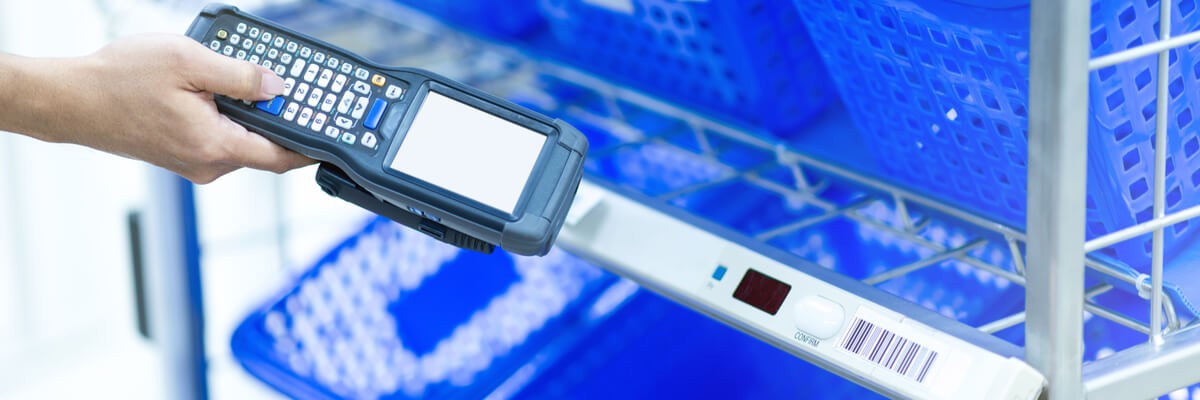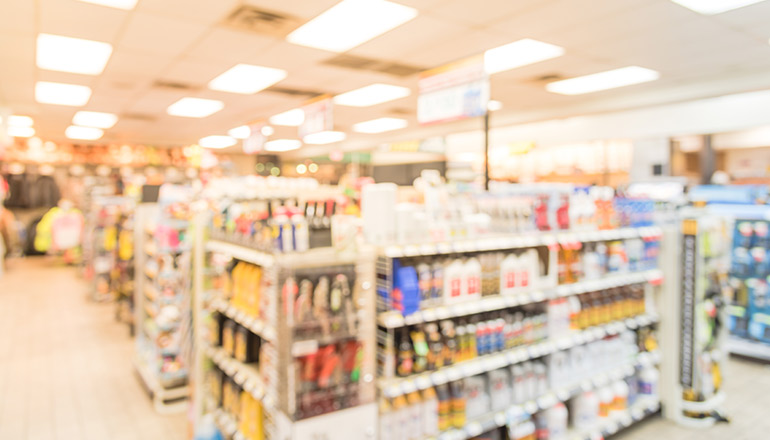Article Portable Barcode Scanners Can Drive Retail and Manufacturing Productivity
The Internet of Things (IoT) is propelling business forward at light speed, and organizations that innovate in smart ways to drive down costs and raise revenues are gaining a competitive advantage — especially in retail and manufacturing.
By Debbie Malone / 31 Aug 2017 18 Jan 2018 / Topics: Artificial Intelligence (AI) Hardware Mobility Modern workplace

The best part about this technology revolution is that you don’t have to equip your workforce with hoverboards to be on the cutting edge. Believe it or not, portable barcode scanners may be one of the most cost-effective solutions to fuel greater workforce efficiency.
Mobile barcode reader and scanner solutions provide real-time business information that can tell retailers when they need to reorder merchandise or on which day a shipment will arrive in the store.
Does a customer want to know how much an item costs? What if you could just scan a tag and tell them then and there?
In manufacturing, portable scanners reduce human error and save time by eliminating manual data entry. They can also simplify supply chain tracking, enable workers to quickly capture and process information with just a barcode scan, and much more.
Improving processes across the supply chain
A manufacturing study by Zebra Technologies predicts the percentage of fully connected manufacturers will grow from 43% in 2017 to 64% in 2022.1 The study also found manufacturers cited the use of barcode scanning, Radio Frequency Identification (RFID) and real-time location systems technologies as a core focus.
That’s because Industry 4.0 IT solutions can radically improve supply chain processes by making it easier to track and identify products, as well as provide data that shows manufacturers where processes can be made more efficient.
Reducing errors
Pharmaceutical regulators have already realized the benefits of this kind of technology and have begun implementing new rules that will help prevent human errors in critical areas.
By November 2018, the U.S. Drug Supply Chain & Security Act will require pharmaceutical manufacturers and packagers to place a serial number and a unique, two-dimensional barcode on all prescription drug bottles and containers being sold, according to a Pharmaceutical Processing article.
Because barcode technology makes it easier to automate processes, some organizations have already begun leveraging the IoT and pharmacy automation to improve safety and to free pharmacists to focus on patients. By using robots to deliver prescriptions, pharmacies can save time and increase accuracy.
Many organizations have also integrated pharmaceutical data into their Electronic Health Record (EHR) systems so that prescription deliveries in hospitals can be tracked with a simple barcode scan.
Other industries are implementing barcode scanning technology in new areas as well. Elmet GmbH — a supplier of two-component liquid silicone rubber for injection molding — told Plastic News it recently introduced a barcode system to help its processors avoid costly mix-ups and downtime from workers using the wrong chemical drums.
The supplier’s chemical drums can now be identified by both their labeling and a quick check with a mobile scanning device. In addition, pumps won’t accept drums that don’t have the right barcode. And with the success of the new system, other raw materials manufacturers may follow suit.
Meeting growing demand
A report by Future Market Insights predicts the barcode scanner market will account for $10.8 billion globally by the end of 2027. The report also revealed increasing demand for mobile scanning devices.
This trend isn’t surprising when you consider how the application of portable scanning technology has expanded to a number of uses that help drive efficiency across retail and manufacturing supply chains.
However, retailers stand to gain much more from the mobile scanning revolution than simply tracking sales records — something they’ve been doing since the introduction of barcode technology.
A variety of mobile scanning solutions are now available that can help retailers gain expanded visibility into everything from product counts and manufacturing dates to selling prices and more — all in real time.
Combined with data analytics applications, retailers can even automate resupply orders or other routine processes, reducing the need for these kinds of tasks to be done manually.
Data analytics and automation can also close the gap between when a product will run out and when it will be back on the shelf — and that can help retailers meet demand more effectively, increasing revenue. Data can be further analyzed to provide information on buying trends that can help retailers understand what to stock up on to prepare for the following season.
Reducing overhead costs
Barcode scanning devices have evolved significantly since their introduction in 1974. Now, hybrid devices and attachments that combine smartphone, tablet and PC functionality with barcode scanning technology are allowing retailers and manufacturers to gain even greater productivity benefits while simultaneously providing workers with next-generation workforce capabilities.
Multi-use devices with integrated barcode scanners offer a lower overall cost of ownership. And when this feature is combined with smartphone, tablet or PC functionality, it can reduce the total number of devices needed for each employee.
Equipping your employees with mobile scanning accessories, such as the Infinite Peripherals Linea Pro 7, that attach to their iPhone devices could enable them reply to emails, take calls and even manage the supply chain — all from a single device that goes where they go. Now that’s a real mobile workforce.
1 Zebra Technologies. (2017). 2017 Manufacturing Vision Study.






